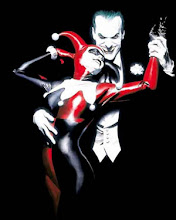http://www.youtube.com/watch?v=xD4qh0p3eY0
Notes:
1. Tango must be a very accurate dance. The placement of foot, the arm needs to be accurate.
2. posture/hold in the tango: In swing dances, man's right cuff is at the junction of the ladie's arm and the body. In Tango, it is the fore arm (one cuff up) that is at the junction of the ladie's arm and body. Consequently, the man's right arm and hand is placed in center of the lady's back, common mistake is too low. Lady's left arm is parallel to the floor. The pressure from the right hand, left hand, and the diaphragm are all the same (say 7 out of 10), a common mistake is having 30 on the hands and 5 at the diaphragm (32:45).
3. Tango Stance: two flat feet, knees slightly inside the feet. This is tango stance. Move the two knees in unisance. Put the hands inside the thighs and feel the thighs working against each other.
Put hands on the outside of the thighs, then pick up the forearm and hands to extend to the front. Push elbows into the side of the body. make very short and very sharp turns. This is the feeling of turns in tango, it should be compact, and internal. (eg. tango telespin)
4. Body speed: the turns in tango is on the same level as there is no rise and fall. It's only left and right. is coordinated from the knees to the center of the body (belly button, Qi area), (like a triangle) then up to the elbows, (like reverse triangle).
5. Foot speed: kicking cigarite box exercise.
6. Close Promenade step. Timing:, from the PP, the foot striket the floor at 1 (16:55 ask the question, 17:28 is the answer.). on the close step, lady is on the inside edge of the right foot, inside edge of whole foot.
7. turning 5 step: 2 different timing variation: traditional timing(QQS&S), and a different one: QQQQS(21:51)
8. Spanish drag (27:12): the man's right knee is toward the inside of the foot, (in and under to give the girl a marvalous shape)
9. Quarter beat(29:41): Timing: Q&Q&S. Foot speed.
10. Fallaway reverse Slip pivot (35:15). Accuracy of the body line. Pay attention to the direction of the center. The center turns left, left for the first two steps, then turn right on the third step. Then left again to change positions with the lady. Common mistake is to turn left the whole way through.
